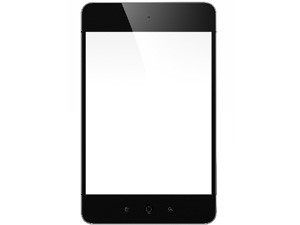
The mid-sized smartphone is dominating the market, while the phone-sized tablet or phablet is just a "fad", according to a recent report by mobile analytics company Flurry.
The survey focused on which screen size has the most active users, dividing the smart mobile devices into five categories: small phones, medium phones, phablets, small tablets and full-sized tablets.
It reveals that 7% of users opt for devices that have screen sizes that are 3.5 inches or smaller (like BlackBerry), while the largest proportion of users, at 72%, prefer devices that are between 3.5 inches and 4.9 inches - this includes the iPhone.
While phablets have started to attract attention, they currently have only 3% of active users. Small tablets like the Kindle Fire and iPad Mini have 5% of active users, while full-sized tablets have the second-largest proportion of users, at 13%.
Fuseware CEO Mike Wronski says there simply isn't a deep need for phablets in the smartphone market. "Phablets neither have the easy portability of smartphones nor the large working areas of tablets, both of which are key attributes for the respective devices. Combine this with poor battery life, due to the larger screen, and it seems that phablets are a weak compromise between smartphones and tablets."
Mike Sharman, owner of digital communications agency Retroviral, says consumer 'want' for a product is directly proportional to the amount of marketing spend invested in the said product.
"Consumers questioned the logic of the iPad, but then adopted it; scratched their heads when the iPad Mini was launched, but then queued for the device," he says.
Uncertain future
It's not all doom and gloom for the phablet, with some pundits remaining positive about its growth. Speaking on future trends for the smartphone market, World Wide Worx MD Arthur Goldstuck agrees that the evolution is towards the larger screen. "No one expected Samsung's Note, with a 5.3-inch screen, to take off, but it turned out to be a huge success."
Samsung has, meanwhile, expanded its phablet offering by introducing the Galaxy Mega range, consisting of 5.8-inch and 6.3-inch smartphones.
According to a Statista forecast, smartphones with a screen size of five inches or more will reach 60 million shipments worldwide in 2013. It also suggests the larger smartphone will catch on and reach 146 million shipments by 2016.
Although the Note has been successful, Fuseware CEO Mike Wronski says that locally, the market may not be large enough to accommodate the entire trifecta of smartphones, tablets and phablets.
"Forty-thousand-five-hundred South Africans search Google monthly for the term 'Galaxy Note', which is currently the world's top-selling phablet. Compare this with the 832 000 monthly searches for 'BlackBerry' and 368 000 for 'iPhone', and one can see that local demand is relatively small, but can't be ignored," he adds.
Sharman says it all depends on what consumers are using smart devices for. "A browsing experience is better on a tablet than a phone, and as data becomes cheaper in SA and other markets, call functions are more likely to be replaced with voice data functions."
The majority of Africa will never engage with the Internet via a laptop or PC, and is a prime candidate for phablet adoption, he adds.
He believes the phablet could be successful if it can overcome the price barrier. "Cost is the major factor behind adoption. Deliver a cheap phablet to a price-sensitive market and it will be successful, not just a fad-let."
Share